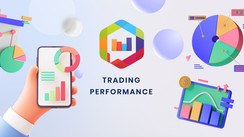When it comes to day trading forex, stocks, or futures, understanding the role of fundamental analysis is crucial. However, for short-term traders, fundamentals may not have a significant impact on their performance. While fundamental analysis is essential for long-term investors, day traders rely on different strategies. In this article, we will explore why short-term traders should focus on other aspects of trading and how to navigate the challenges posed by fundamental data.
The Limitations of Fundamental Analysis
The Limited Relevance of Fundamental Analysis in Short Time Frames
In short-term trades, which may last only a few minutes, the information found on a company's balance sheet becomes less significant. While fundamental analysis is crucial for long-term investors who seek to assess the overall financial health of a company, day traders focus on exploiting short-term price movements. For day traders, it is more important to understand market dynamics, trading patterns, and technical indicators rather than analyzing the fundamental aspects of a company.
A company can have impressive financial statements, strong earnings, and solid fundamentals, yet experience a sudden decline in its stock price due to market volatility, unexpected news events, or changes in investor sentiment. On the other hand, a company with weak fundamentals can witness a significant uptrend in its stock price fueled by market speculation or positive market sentiment. These examples highlight that short-term trades are not influenced by fundamentals, but rather by other factors such as market psychology, supply and demand dynamics, and short-term trading patterns.
Therefore, day traders should avoid getting distracted by fundamental analysis and instead focus on other aspects that have a more immediate impact on short-term price movements. By mastering technical analysis, reading charts, and understanding short-term market trends, day traders can improve their chances of success.
Profits in Short-Term Trading: Beyond Fundamental Analysis
For day traders, the primary goal is to consistently execute a trading plan and generate profits within the constraints of their chosen time frame. While long-term investors rely on fundamental analysis to assess the intrinsic value of a company and make investment decisions, day traders can achieve profitability by effectively utilizing technical analysis and price action.
Technical analysis involves studying historical price patterns, trends, support and resistance levels, and other technical indicators to identify potential trade setups. Day traders focus on short-term price movements, momentum shifts, and volatility to capitalize on intraday market opportunities.
By developing a robust trading plan based on technical analysis, day traders can identify high-probability trade setups, set specific entry and exit points, and manage their risk effectively. Instead of delving into a company's financial performance, day traders monitor price charts, volume patterns, and market indicators to make informed trading decisions.
It's important to note that while fundamental analysis can provide valuable insights into a company's long-term prospects, it may not provide the necessary information to profitably navigate the fast-paced and volatile nature of short-term trading.
In conclusion, day traders achieve better results by focusing on technical analysis and price action rather than getting entangled in the complexities of fundamental analysis. By mastering technical indicators, chart patterns, and short-term market dynamics, day traders can enhance their ability to identify profitable trading opportunities and improve their overall performance in the short-term trading arena.
The Timeliness of Fundamental Analysis: Challenges for Short-Term Traders
Fundamentals Are Not Timely for Short-Term Trades
One of the significant challenges for short-term traders in utilizing fundamental analysis is the lack of timeliness. Fundamental data, such as economic indicators and company financial statements, are typically released on a periodic basis. Economic data may be released monthly, quarterly, or annually, while companies report their financial performance on a quarterly or yearly basis. This infrequency makes fundamental analysis less relevant for day traders who require real-time information to make quick trading decisions.
Short-term trades are characterized by rapid price movements that can occur within minutes or even seconds. To navigate these swift changes, day traders rely on technical analysis, which provides them with immediate and real-time insights into market trends and price patterns. Technical indicators, such as moving averages, oscillators, and volume analysis, enable day traders to identify short-term opportunities and time their trades more effectively.
By focusing on technical analysis, day traders can adapt to the fast-paced nature of short-term trading and capture profits from short-lived market movements. However, it is important to note that while fundamental analysis may not be timely for short-term trades, it can still be relevant for long-term investors who have a broader time horizon and are focused on the overall financial health and prospects of a company.
Emphasizing Real-Time Data: Technical Analysis in Short-Term Trading
In short-term trading, the ability to analyze and interpret real-time data is critical. This is where technical analysis comes into play as a powerful tool for short-term traders. Unlike fundamental analysis, which looks at the underlying financials and economic conditions, technical analysis focuses on the price and volume data of a security. By studying historical price patterns, chart formations, and technical indicators, day traders can make informed decisions based on real-time market behavior.
Technical analysis allows day traders to identify trends, support and resistance levels, and potential price reversal points. Chart patterns, such as triangles, flags, and double tops, provide insights into possible price movements and trend continuation or reversal. Additionally, technical indicators, such as moving averages, relative strength index (RSI), and stochastic oscillators, offer quantitative measures of market conditions and help traders gauge overbought or oversold levels.
The advantage of technical analysis lies in its ability to provide timely and actionable information for short-term traders. By focusing on real-time data, day traders can adapt quickly to changing market conditions, seize short-term trading opportunities, and effectively manage risk. While fundamental analysis may offer a long-term perspective, technical analysis is the key to success in the fast-paced world of short-term trading.
Integrating Fundamental Analysis as Supplementary Information
While fundamental analysis may not be the primary driver of short-term trading decisions, it can still serve as supplementary information for day traders. Understanding the broader fundamental picture can provide context and insights into the overall market sentiment and potential macroeconomic factors that may impact short-term price movements.
For example, major economic events such as central bank announcements, GDP reports, or employment data releases can have a significant impact on market volatility. By being aware of these events and their potential effects, day traders can adjust their trading strategies or temporarily step aside during high-impact news releases to avoid excessive risk.
Similarly, company-specific fundamental events, such as earnings announcements or major corporate news, can lead to significant price movements. Day traders can benefit from tracking these events to anticipate potential volatility or identify trading opportunities that align with their short-term strategies.
By integrating fundamental analysis as supplementary information, day traders can gain a more comprehensive understanding of the market and enhance their decision-making process. However, it is crucial to prioritize real-time data and technical analysis when it comes to short-term trading strategies.
The Advantages of Technical Analysis for Short-Term Traders
Technical analysis offers several advantages specifically tailored to the needs of short-term traders:
- Real-time insights: Technical analysis provides immediate and up-to-date information on market trends, price patterns, and momentum, enabling day traders to make timely trading decisions.
- Adaptability to short-term price movements: Technical analysis focuses on short-term price patterns and trends, allowing day traders to identify entry and exit points that align with the rapidly changing market dynamics.
- Quantitative measures: Technical indicators offer quantitative measures of market conditions, helping traders gauge the strength, volatility, and potential reversals in short-term price movements.
- Risk management: Technical analysis allows day traders to set specific stop-loss orders, target profit levels, and position sizing based on risk-reward ratios, enhancing risk management strategies.
By leveraging the advantages of technical analysis, day traders can effectively navigate the challenges of short-term trading and improve their overall trading performance. While fundamental analysis may have its place in long-term investing, the fast-paced nature of short-term trades demands a focus on real-time data and technical insights.
The Unpredictability of Short-Term Reactions
One might assume that if analysts predict a company will earn $1 per share, and it instead earns $1.05 per share, the stock price would increase. However, this is not always the case. Market reactions to fundamental data points can appear random. A positive result may cause a decline in an asset's value if the market anticipated an even better outcome. Conversely, a negative result might lead to an asset's price rising if traders expected worse. The unpredictability of short-term reactions makes it challenging to rely on fundamental analysis for day trading decisions.
Monitoring Fundamental Data in Day Trading
While day trading typically does not require a close watch on news or a company's financial condition, it is important to be aware of earnings and economic reports release dates. The specific numbers related to these releases may not matter, but the news events can cause significant price swings as both short-term and long-term traders react. By staying informed about these events, day traders can adjust their trading strategies accordingly. It is advisable to consult the Bloomberg economic calendar for news releases and key events that may affect the market.
Final Thoughts on Day Trading and Fundamentals
Fundamental analysis serves primarily as a tool for long-term investors. For day traders, the release of fundamental data points is infrequent and does not significantly impact short-term trades. Stock prices can rise or fall on any given day or minute, regardless of the fundamental data. While fundamental releases can trigger large price movements, predicting the direction and impact of these moves is challenging. Day traders fare better by avoiding trading during news releases and instead





